Research Article Open Access
Allium Chromosome Aberration Test for Evaluation Effect of Cleaning Municipal Water with Constructed Wetland (CW) in Sveti Toma?, Slovenia
| Peter Firbas1* and Toma�?¾ Amon2 | |
| 1Private Researcher, SICRIS Id. No.11784, Private Laboratory for Plant Cytogenetics, Ljubljanska c. 74. SI-1230 Dom�?¾ale, Slovenia | |
| 2Researcher, Gorazdova ul. 3. SI–1000 Ljubljana, Slovenia | |
| Corresponding Author : | Peter Firbas Private Researcher, SICRIS Id. No.11784 Private Laboratory for Plant Cytogenetics Ljubljanska c. 74. SI–1230 Dom�?¾ale, Slovenia E-mail: peter.firbas@gmail.com |
| Received April 16, 2013; Accepted May 27, 2013; Published May 29, 2013 | |
| Citation: Firbas P, Amon T (2013) Allium Chromosome Aberration Test for Evaluation Effect of Cleaning Municipal Water with Constructed Wetland (CW) in Sveti Toma�?¾, Slovenia. J Bioremed Biodeg 4:189. doi: 10.4172/2155-6199.1000189 | |
| Copyright: © 2013 Firbas P, et al. This is an open-a ccess article distributed under the terms of the Creative Commons Attribution License, which permits unrestricted use, distribution, and reproduction in any medium, provided the original author and source are credited. | |
Related article at Pubmed Pubmed  Scholar Google Scholar Google |
|
Visit for more related articles at Journal of Bioremediation & Biodegradation
Abstract
We show the effectiveness of the communal waste water cleaning plant of the type "LIMNOWET® Constructed Wetlands (CW)". The tests were done with the Allium metaphase test and show the degree of genotoxicity, by observing the aberrations of the metaphasic chromosomes of the plant Allium cepa L. that are evoked by genotoxic substances in the polluted water. The CW plant reduced the degree of genotoxicity 29.0% to 3.5% (the Fisher’s Exact test: p=9.2e–13<0,00001). Therefore CW is a very effective ecoremediation technique, since it removes up to 96% of waste.
| Keywords |
| Constructed wetland (CW) LIMNOWET®; Allium metaphase test; Chromosome damage |
| Introduction |
| Urban and agricultural waste can add significant amounts of contaminants to surface water and sediments. The resulting water pollution presents a serious problem for the health of the biota and humans that interact with these aquatic ecosystems [1]. |
| The standardized and sensitive testing method “Allium test” is widely used for testing the quality of drinking water and environmental water pollution [2,3]. This officially accepted method has been in use for more than forty years. It is especially useful for testing the possibility contaminated water streams like rivers [4-6], rain and snow [7], earth [8], waste water monitoring [9], pesticides like atrazin [10], benzo(a) piren [11], pharmaceutical effluents [12], outflows from hospitals [13], including possible radioactive wastes [14]. Allium test shows a good correlation with other plant [15] and animal tests [16,17]. The test procedures described here show the effective degree of combined genotoxic activity of the pollutants on the metaphase chromosomes. Complex interactions may occur in vivo because component pharmacokinetics increases the unpredictability of pharmacodynamic outcomes [18]. |
| There are six bioassays used in this technique: Allium and Vicia root tip chromosome break, Tradescantia chromosome break, Tradescantia micronucleus, Tradescantia-stamen-hair mutation and Arabidopsismutation bioassays were establish from four plant systems that are currently in use for detecting the genotoxicity of environmental agents [15]. The Allium root tip chromosome aberration assay has been adopted by the International Program on Plant Bioassay (IPPB), for monitoring or testing environmental pollutants [19]. Higher plants are recognized as excellent genetic models to detect environmental mutagens, and are therefore, frequently used in monitoring studies [20]. |
| Constructed Wetlands (CW) imitate the self-cleaning ability of nature for the treatment of polluted waters. In general, CWs operate without machine power and need no electricity to run. This saves construction, maintenance and operation costs. The system consists of several successive beds filled with substrate (e.g. stone pebbles), and at bottom isolated with plastic foil. The flow of water through the bed substrate follows gravitational gradient. There is also added dry substrate on the bedtop, which reduces unpleasant odors and drives away insects. Perkins and Hunter [21] report the findings of an investigation of Faecal Coliform (FC) bacteria and Faecal Streptococci (FS) removal in four small, parallel Typha-dominated, surface flow reed beds. They constitute the tertiary phase of treatment at the Crow Edge sewage treatment works near Holmfirth in Yorkshire. Reduction in concentration was observed between inflow and outflow wastewater for both indicator bacteria, giving mean bed removal efficiency values of approximately 85-94%. The water is treated with the help of microorganisms, wetland plants, as well as physical and chemical processes. |
| Onion (Allium cepa L.) is very suitable for genotoxic studies. Let us list some of its advantages: (i) The root growth dynamics is very sensitive to the pollutants; (ii) The mitotic phases are very clear in the onion; (iii) It has a stable chromosome number; (iv) Diversity in the chromosome morphology; (v) Stable karyotype; (vi) Clear and fast response to the genotoxic substances; (vii) Spontaneous chromosomal damages occur rarely. Therefore, this test has become well established for the determination of the genotoxic substances in various environments. In this study, we describe various chromosome and chromatide damages in the root meristeme cells of the onion (Allium cepa L.), which serve as biomarkers for the different types of environmental pollution. With Allium test, one can obtain both the effective degree of cleaning the waste water and the impact factor of the so cleaned waste water on the stream into which it flows. |
| Materials and Methods |
| Sample example |
| Influent and effluent water-Constructed wetlands (CW). |
| Onion preparation for the test |
| Small onion (Allium cepa L.) bulbs of the same size 16-18 mm, weighing about 3-3.5 g, aged maximum 6 months were denuded by removing the loose outer scales and scraped, so that the root primordia were immersed into the tested liquids. |
| Experimental procedure |
| The exposure time of small onion (Allium cepa L.) bulbs in each experiment was 72 hours at 22°C and protected against direct sunlight. In order to eliminate the influence of daylight rhythms, the plants were exposed to constant artificial light of middle intensity. In an alternative version of our Allium metaphase test, the five onion seeds were placed directly in the experimental water containers. The water sample under investigation was divided into three portions, which were successively applied to the onion roots in 24 hour periods. So each 24 hours, the roots obtained a fresh bath of the sample solution. After 72 hours, the samples were removed from water bath. The macroscopic and microscopic tissue morphology investigation followed. |
| Chromosome preparations |
| The squash technique for onion root as described [7,22], was used for the chromosome investigation. Chromosome samples were taken from root meristems containing actively growing cells. The developing roots with bulbs were pretreated with 0.1% water solution of colchicine for 3 hours at 21°C. After washing in distilled water for 20 min, the terminal developing roots of 2 mm length were fixed for 1 h in methanol: propionic acid mixture (3:1 or 1:1). Then they were macerated and stained in order to obtain a cellular suspension. This sample was stained with 0.5% aceto-carmine for 4-5 min at 60°C without hydrolysis, and squashed in aceto-carmine [23]. For observation was used optical microscope Olympus-BX 41, with the photo system PM 10 SP, typical magnifications used were 400 X and 1000 X. |
| Macroscopic parameters |
| After 72 hours growth in the test solution, we measured the root length and noted related parameters as the shape of the roots, number, color and turgescence [2,3]. Toxicity and genotoxicity measurements were performed with 10 ppm concentration of the test MMS chemicals as Positive Control (PC). |
| Microscopical parameters |
| To study the damage of chromosome and chromatid (breaks), we used the treatment with colchicines. Onion Allium cepa L. has 16 monocentric chromosomes (2n=16), with basic number x=8 (Figure 1). The possible aberrations seen at metaphase are: (i) single break chromatide, (ii) double break chromatide, (iii) gap break and (iv) centromere break (Figure 2). |
| Level genotoxicity |
| This is the percentage between all the metaphase cells and the cells with their chromosomes damaged. The total number studied was 200 metaphase cells. |
| Parallel control test |
| Integral parts of Allium test are the so called negative and positive control. Negative control shows the degree of toxicity in unexposed onions, and serves as control of the test efficiency. Positive control is used with known material, which normally induces a high degree of toxicity, and is necessary for controlling the test response. In other words-nearer the results of tested samples to negative control, the better the quality of water. On the other hand-farther the values from the results of negative control and nearer to the positive control–this points to poorer water quality. |
| Physical and chemical parameters |
| The physical and chemical properties of the effluent sample were determined in accordance with standard analytical methods [24]. Suspended substances in the sample were determined by the standard (SIST ISO 11923), COD with standard (SIST ISO 6060), and BOD with the standard (SIST EN 1899-1). |
| Statistic calculation |
| Statistically established significant differences among the investigated samples are confirmed by the statistical calculation of paired data analysis using the two-way Fisher’s exact test, which gives the p value property between pairs of data [25]. These pairs (investigated samples) are either different (statistically significant) or the same (statistically insignificant), and tell us what the risk is. The most common values are 0.05, followed by 0.01, 0.001 and 0,0001. With regard to these limits, we can also speak about 5%, 1%, 0.1% and 0.01% levels of significant results. Whichever of these levels we choose depends a great deal on the nature of the data and the problem addressed by the basic assumption. Statistical significance should not be the only determining factor when evaluating the results. |
| Results |
| We used the Allium metaphase test (Allium M test), which indicates partially damaged chromosomes or chromatids. The results of the Allium M test are shown in tables 1-3, and figures 1-5, and the physical and chemical parameters are displayed in the table 4. |
| Constructed wetland (CW) described here is located in village Sveti Toma�?¾ in Slovenske gorice (46° 29�?�? N; 16° 4' E); Ev. No. 13/56-08/P (Limnos, Slovenia). CW follows the system Limnowet® [26]. Its GPS coordinates are YX: 583011 149381. The village Sveti Toma�?¾ has 254 inhabitants. It is surrounded by fields, wineyards and forests [27]. |
| CW was built in the year 2000. It is intended for cleaning of household waste water and effluent of urban-municipal activities. Load CW is 250 PE (population units), with an area of 700 m2. The system consists of two stage beveled settler, filtration bed, treatment beds and polishing bed. The slope of the shaft is 1%, the substrate is composed of different grades of sand. Filtration bed is planted with bent-grass (Carex) and rush (Juncus), treatment bed the shaft with reds (Phragmites), and rush (Juncus) polishing bed [26]. If necessary, the system can end with an open lagoon for multipurpose use for purified water (irrigation or watering of green areas, aqua culture), or as a landscape element. The sludge from mechanical treatment is composted in the composting bed, which is basically similar to CW beds [26]. |
| General toxicity–root growth inhibition and malformation |
| The cleaned water (Sample II) shows longer roots and lesser general toxicity than the uncleaned waste water (Sample I), p<0.01. The latter also induces longer roots than the positive control (Sample IV). The cleaned water induces equal root length as the negative control (Sample III). |
| Level genotoxicity–induction of chromosome aberration in root meristems cell |
| The cleaned outflowing water (Sample II) is significantly less genotoxic than the inflowing polluted water (p=9.2e–13< 0,00001). So the level of genotoxicity decreases from 29.5% to 3.5%. This is confirmed both by PC and NC. The inflow water (Sample I) is not statistically significantly different from PC (p=1>0.05) but is significantly different by NC (p=7.9e-14< 0.00001). The outflowing water not statistically significantly different with NC (p=0.7887>0.005), but is significantly different by NC (p=7.9e-14<0.00001). |
| Physical and chemical parameters |
| CW effectively reduces the concentration suspended solids for 65.52/71.43%, markedly reducing the COD (chemical need when oxygen) to 84.2/85% and BOD5 (biochemical oxygen consumption in five days) for 94.0/95.8%. |
| Discussion |
| Our testing has shown the high efficiency of the CW plant in Sveti Toma�?¾. Constructed Wetlands (CW) reproduce the self-cleaning ability of nature. They coexist nicely with environment, improve the appearance of degraded areas and provide new biotopes for plants and animals. Even most of the pharmaceutical substances (e.g. antibiotics and other drugs) get decomposed there. |
| Waste waters are typically very mitodepressive. That is clearly shown in the root growth inhibition of the experimental plant Allium cepa L. [2,3]. Mutagen parameters are represented by the damages of chromosomes like single or multiple chromatid breaks, gap damages, circular centric or acentric chromatids. Further abnormalities that appear are centric or acentric fragments, dicentric chromosomes and circular chromosomes [7,22,28-30]. |
| The cell is called aberrant, if at least one chromosome gets damaged [31]. The onion Allium cepa has 16 (2n=16) chromosomes-several of them can get damaged. There is also possible to observe several types of damage on a single chromosome. Typically one to two chromosomes become damaged, sometimes 3 to 7 or 8, in extreme cases, even 12 or all. This corresponds to the degree of pollution of the tested water. In addition, multiple damages on a single chromosome point to serious genotoxicity [31]. Effluent wastewater has a complex mixture of inorganic and organic substances (chemical complex mixture), and is highly mutagenic. Typically at least 4-10 chromosomes (sometimes even all) get damaged in such a water (Figure 5D). The cleaned water samples from the CW show a much lesser degree of genotoxicity– typically one chromosome, rarely two are damaged. |
| The discharge of wastewater into natural water courses, ponds and wetlands has been an ancient practice. Urbanization led to the development of more engineered solutions for domestic sewage, as well as industrial effluents. This technical development temporarily lessened the economical importance of the earlier approaches that were closer to nature [32]. However, in the last years, there has increased interest in simpler, more natural methods for wastewater treatment including Macrophyte Treatment System like CWs [32]. Constructed Wetlands (CWs) imitate the self-cleaning ability of nature. They reduce the concentrations of nitrogen, phosphorous and other toxic substances. Their removal efficiency up to 96%; they are cheap to build and maintain, and fit nice into the local environment. |
| In the period between 1960-1970 in Slovenia, there was a common practice of melioration and regulation of small streams. So, many of them were biologically destroyed. In addition, there was paid very little attention to the waste water cleaning. However, from 1990 on the situation has improved very much. The projects resulting in ecoremediations and revitalizations were undertaken. This was accompanied by the testing also with the Allium method, which helps to monitor the general water quality. Until 2011, there was made more than 1230 Allium tests on 390 localities [31], such trends increasing, since there are many CWs and other waste water treatment plants in Slovenia |
| In our further work, we intend to expand our testing methods with the so called micronucleus test (MN) [33], on the water animals especially when testing larger water volumes like lakes. There are more than 200 lakes in Slovenia and more than 1300 water habitats [34]. They are sensitive ecosystems, where one needs to monitor the quality of water, in order to keep the Slovene waters clean and healthy. |
| Introduction of genotoxicity research in the environment protection policies is of great importance, since it enables us to understand the impacts and consequences of genotoxic substances present in water. The goal of our research is to give an immediate and important contribution to preserving the health of the most precious life source– water. Due to our lack of knowledge and carelessness, we have already polluted some water sources; therefore, it is our obligation to correct our mistakes. We should be aware that as regards genotoxicity, there are no safe “Maximum Permissible Concentrations” (MPC), which would ensure a good and reliable quality of water. |
References
|
Tables and Figures at a glance
| Table 1 | Table 2 | Table 3 | Table 4 |
Figures at a glance
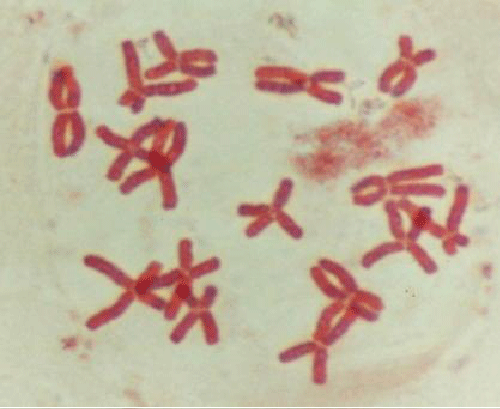 |
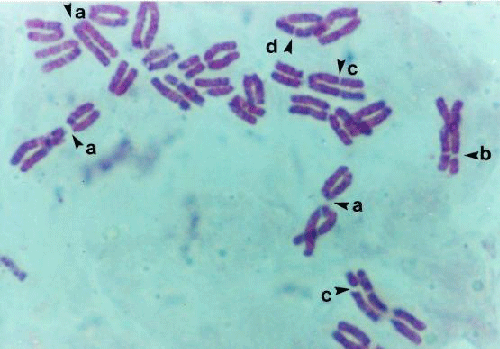 |
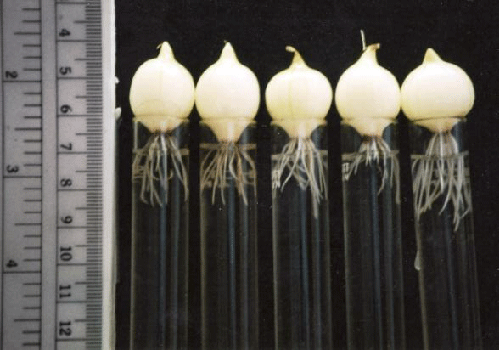 |
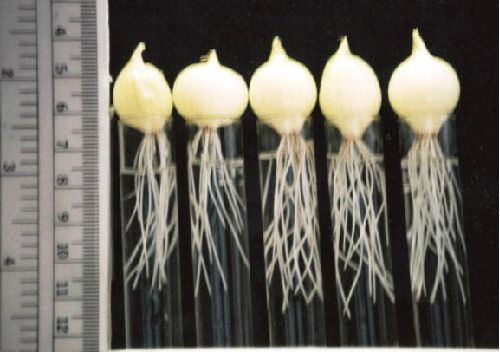 |
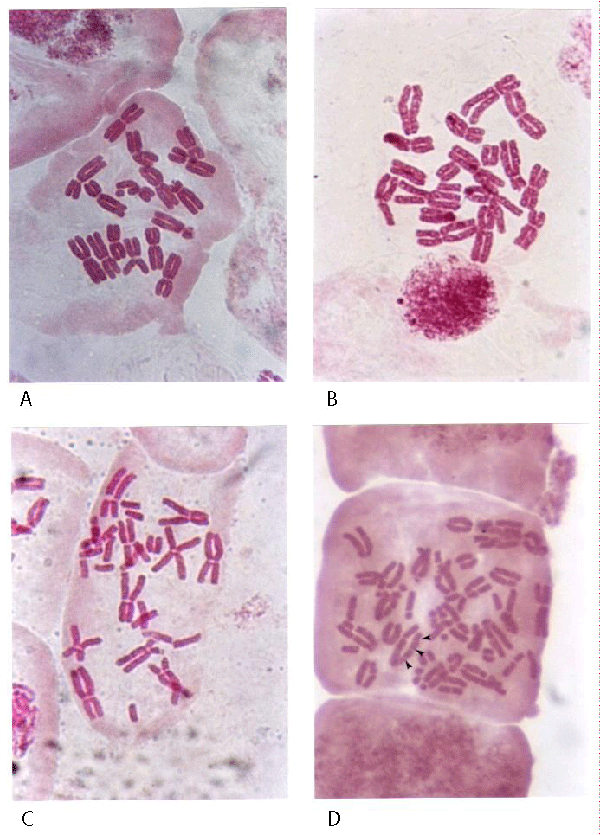 |
| Figure 1 | Figure 2 | Figure 3 | Figure 4 | Figure 5 |
Relevant Topics
- Anaerobic Biodegradation
- Biodegradable Balloons
- Biodegradable Confetti
- Biodegradable Diapers
- Biodegradable Plastics
- Biodegradable Sunscreen
- Biodegradation
- Bioremediation Bacteria
- Bioremediation Oil Spills
- Bioremediation Plants
- Bioremediation Products
- Ex Situ Bioremediation
- Heavy Metal Bioremediation
- In Situ Bioremediation
- Mycoremediation
- Non Biodegradable
- Phytoremediation
- Sewage Water Treatment
- Soil Bioremediation
- Types of Upwelling
- Waste Degredation
- Xenobiotics
Recommended Journals
Article Tools
Article Usage
- Total views: 21025
- [From(publication date):
May-2013 - Nov 21, 2025] - Breakdown by view type
- HTML page views : 15886
- PDF downloads : 5139
